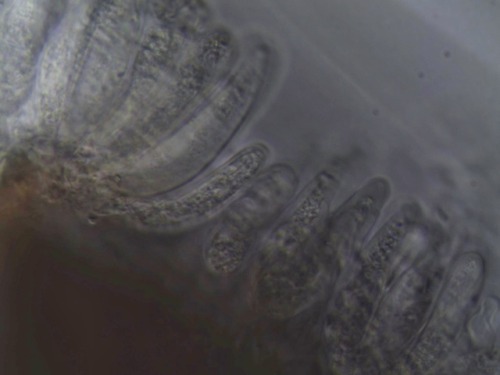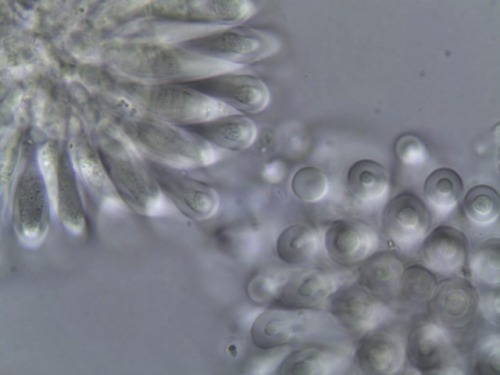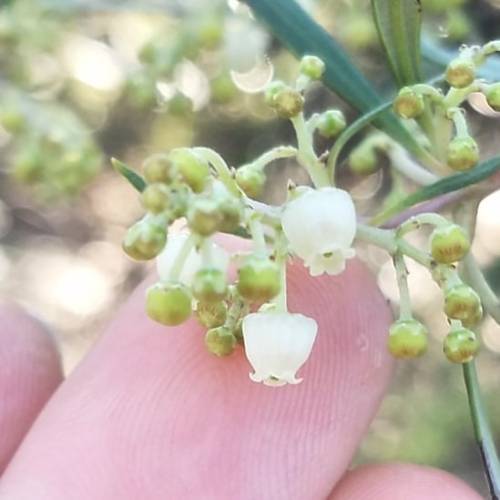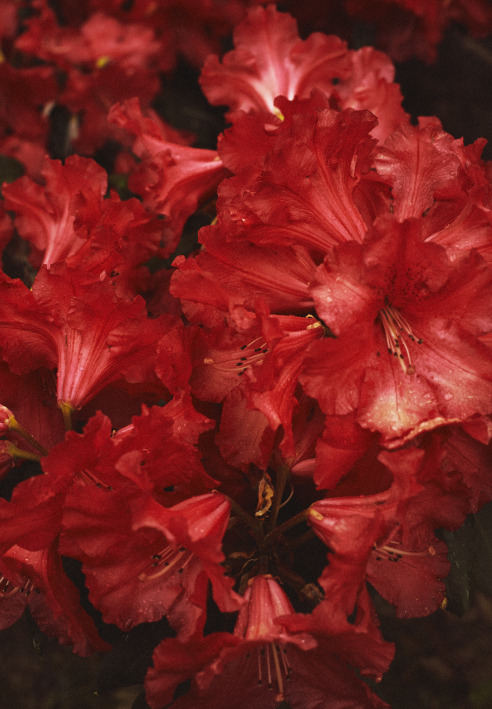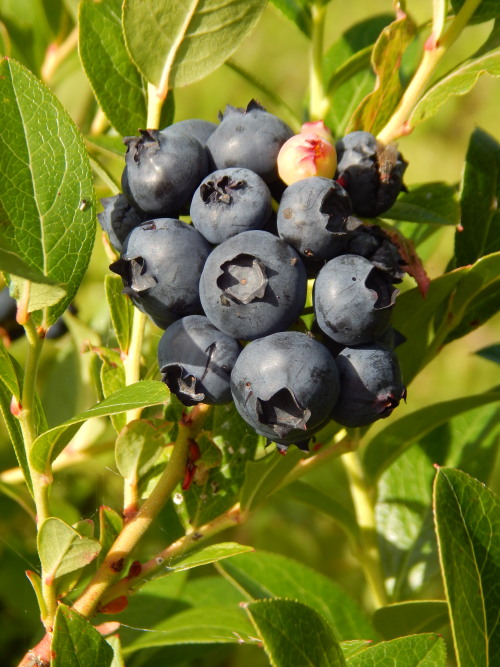#ericaceae
Mycosphaerella stemmatea -fungus is causing leaf spot disease on lingonberry (Vaccinium vitis-idaea).
Post link
Working at a place like @rsabg, I’m lucky enough to meet (and be a small part of preserving) endangered plants like Ornithostaphylos oppositifolia (Baja birdbrush). The Flora of North America has this to say about these stately native shrubs: “Ornithostaphylos oppositifolia is known in the United States from a single mesa and adjacent slopes in the Tijuana Hills just north of the international border with Mexico in San Diego County. Only 103 individuals have been located on the United States side of the border, and the species is listed as endangered under the California Endangered Species Act. The population has been declining due to habitat fragmentation by roads and trails and disturbance caused by illegal border crossings and Border Patrol activities, including ‘brush’ clearing. Recently, the extensive disturbance caused by the building of a double border fence has dramatically affected the population, and its long-term survival is uncertain.” Plants don’t recognize our borders, but our activities along them have a huge impact on plants and their habitat. O. oppositifolia were here long before we drew those lines across the land. Is keeping specific groups of people on specific sides of arbitrary boundaries worth the harm we do in the process?
#Ericaceae #Ornithostaphylos #OrnithostaphylosOppositifolia #BajaBirdbush #Birdbush #california #botanicgarden #botanicalgarden #plants #southerncalifornia #SoCal #botany #botanize #livingmuseum #garden #gardening #museum #ranchosantaanabotanicgarden #science #conservation #rareplants #endangeredspecies #wildflowers (at Rancho Santa Ana Botanic Garden)
https://www.instagram.com/p/B8E4Z7PAzf4/?igshid=1ob1u500nqews
Post link
Rhododendron arboreum (possibly hybrid of), Ericaceae
Today I went for a walk in the always gorgeous Pollok Country Park to see if any of the rhododendrons part of the extensive collection were already in bloom. Sir John Stirling Maxwell (1866-1956), owner of the estate, was pretty much obsessed with these plants: he funded several botanical expeditions to Asia, contributed with interesting and accurate notes to the Rhododendron Society and bred a number of beautiful hybrids.
That’s why, although the rhododendron you see in photo ticks all the boxes for the species complex, I can’t just assume it is a pure R. arboreum from original material collected in the Himalayas. I should really get in touch with the gardeners who work there to see if they can direct me towards any archival data about the plants currently existing there. I’d really like to know the exact history of these individuals, as I’ve already tried digging about a Clematis tangutica and a Parthenocissus tricuspidata without much success.
Anyway, the tree rhododendron is the largest in the genus: the tallest ever recorded was about 33 metres, although it generally settles for less than half that height and can grow into a sprawling shrub with thick, contorted trunks. It is very variable in its morphological aspects and, as I mentioned above, it forms a species complex with numerous subspecies, encountered in the Himalayan region down to Myanmar. In its native area it has a variety of traditional culinary and medicinal uses, but let’s not forget its toxicity is well known and recorded.
Definitely the highlight of my day, I’m so happy I got to see it in full bloom!
Post link



